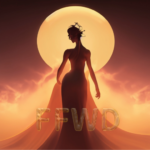
Mythology and Astrology: Inanna & Venus
Celebrating Gods and Stars: Mythologies, Astronomy, and the Divine Connection
Many cultures were keen observers of the skies; they noticed the predictable movements of celestial bodies such as the sun, moon, and planets.
These movements were critical for agricultural, seasonal, and calendrical purposes. As they studied the heavens, they developed complex systems for understanding the cosmos.
The Greeks, for instance, were influenced by Mesopotamian astronomy and mythology, leading to the sharing of concepts and terminology.
In these cultures, gods and goddesses were often associated with natural elements, forces of nature, and celestial bodies.
These deities played significant roles in mythologies and were believed to exert influence over human lives.
Associating gods with planets and celestial events reinforced the idea that the gods were intimately connected with the cycles of nature and the universe.
Either way, mythologies served as a way to explain natural phenomena and human experiences. The movements of planets, the changing seasons, and various celestial events were woven into narratives involving gods and their interactions with humans.
These myths conveyed the idea that the gods’ actions in the heavens had corresponding effects on Earth.
Take the myth of Inanna.
In the myth of Inanna’s descent into the Underworld, her disappearance and reemergence from the realm of death (the Underworld) and her subsequent return to the world of the living are symbolic of Venus as a morning star and an evening star.
The Myth of Inanna (Venus)
The tale of Inanna, an ancient Sumerian goddess, unfolds as follows which predates Greek mythology, with Inanna being associated with Venus in Mesopotamian lore.
The crux of her myth revolves around her journey into the Underworld, followed by her triumphant return to the Upper World.
It all begins when Inanna marries Dumuzid, a local shepherd.
Shortly after her union, Gugalanna, her sister’s spouse, passes away. Inanna travels to the realm of her sister, Ereshkigal, the Queen of the Dead, to witness the funeral rites and provide support.
However, Ereshkigal harbors no desire for Inanna’s presence. Fortunately, Inanna had instructed her devoted servant, Ninshubur, to seek assistance if she failed to return within three days.
Inanna faces trials at the first of the seven gates to the Underworld, leaving her vulnerable and unclothed before Ereshkigal.
Ereshkigal orders Inanna to be suspended on a hook, just like the fate of any other entrant into the Underworld. This act triggers death in the world above, symbolizing the absence of Inanna’s life-affirming qualities.
In her absence, Ninshubur seeks help, leading to Inanna’s father-in-law, Enki, to create two beings to rescue her.
Inanna reclaims her regalia, signifying a resurrection, although she emerges transformed.

But in order to depart the Underworld, she must designate a substitute to take her place. Selecting her husband, Dumuzid, who remained unmoved during her absence, Inanna’s decision reflects her guilt.
Soon, she offers herself in exchange for his release, marking the beginning of the year.
This symbolism mirrors the changing seasons and the perpetual cycle of life, death, and rebirth.
The story further encapsulates the transition of Venus from a morning star into an evening star.





